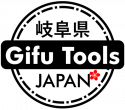Frequently Asked Questions
Japanese Western Style Knives

Thin, light weight and double sided knives used by over 90% of chefs and home users
A: This edge style is commonly referred to as a double-edged, double-ground, or double-beveled blade. It is a stronger blade configuration than the single edged blades of traditional Japanese knives, and Western style knives are perfectly suited for any kitchen.
A: Japanese knives are generally lighter in weight and made of thinner and harder steel with a long edge retention. This blade profile makes Japanese knives exceptionally nimble and sharp, and well suited for finer, more precise work. German knives are more utilitarian and tend to have a thicker and heavier blade, allowing them to be used on bones and frozen foods.
A: Most Western style knives on the market have a 50:50, or symmetrical “V”-shaped blade that is sharpened evenly on both sides. Although the 50:50 edge is convenient to re-sharpen, many Japanese Western style knives are sharpened to a thinner, asymmetrical edge. By concentrating the sharpening on the face of the blade at a steeper angle than on the back, a thin cutting edge is created that approaches the sharpness of a traditional Japanese single edged design.
These asymmetrically beveled edges are made possible by innovations in steel-making, tempering, and edge crafting employed by Japanese manufacturers. A lower grade steel would not hold an angled edge design and would soon dull, and a blade formed with less flexibility would chip or crack when sharpened to such a thin edge.
A: The Rockwell hardness scale (HRC) provides a convenient way to compare the hardness of different materials, such as steel. Simply put, a lower HRC means that the steel is softer, while a higher number indicates a harder steel. Generally, softer steel knives are easier to sharpen but don’t hold an edge as long, and a harder steel has better edge retention but will take longer to sharpen. The HRC is a good scale to help guide one in choosing a knife, but other factors such as weight, balance, purpose etc. should also be considered.
A: Please refrain from cutting extremely hard and/or frozen items (i.e bones, seeds, metal, etc.) with your knife. This may cause chipping or damage to the edge.
A: The Japanese Gyuto is an extremely versatile chef’s knife. The Japanese chef knife can be used for cutting meat, fish and vegetables, making it suitable for preparing Western cuisine. Japanese chef knives have a reputation for their lightweight and thin blade that maintains a long edge retention.
A: The Suisin Inox Wa Honyaki features one of the thinnest edges possible on a double-edged knife. The blade’s sharp 90:10 bevel is similar to a single-sided edge, making it great for precision work. This line is the lightest knife collection and is highly recommended for those interested in traditional Japanese knives, while retaining all the practicality and user-friendliness of Western style knives.
A: We recommend using a gentle cutting surface such as polyvinyl acetate or an end-grain wooden cutting board.
A: We do not recommend the usage of honing steels on Japanese Western and traditional Japanese knives because honing steels are intended for realigning and straightening blades rather than achieving a proper edge. Japanese knives feature a harder steel which gives them exceptional sharpness and edge retention. The use of a honing steel may damage your knife or change its body shape.
A: Water stains occur as a natural oxidation process. In most cases, they are purely a cosmetic issue and will not affect the performance of a knife. Rust erasers can help remove most staining and Tsubaki oil can be applied to prevent future staining.
Japanese Western Style Knives

Thick, heavy and single sided knives mostly wth Japanese traditional oval wooden handles used by mainly by Professional sushi chefs and some keen home users.
A: Traditional Japanese knives are sharpened or grounded only on one side of the blade to create a razor sharp edge and a slightly concave edge on the reverse side. This design creates an overall sharper cutting edge, makes resharpening easier and allows for more delicate culinary work. The single-edged blade is a unique feature of traditional Japanese knives, which is directly linked to Japanese cuisine and history. Traditional Japanese cuisine aims to preserve and accentuate the true flavors of fresh and seasonal ingredients, and a sharp knife is essential to this process.
A: Unfortunately the structure of a Japanese traditional knife makes conversion impossible. The beveled edge of a traditional Japanese knife is more acute than that of a double-grounded blade, and only cuts to one side.
Traditional Japanese knives are very task specific. Japanese sushi chefs tend to have many knives, but the Yanagi, Deba, and Usuba are considered essential and make up the core of a traditional Japanese knife collection. The Yanagi is used in a long drawing motion to cut precise slices of sashimi. The Deba, used for fish butchery and fileting, is constructed with a thick spine and a lot of weight. The Usuba, or “thin blade,” is designed to cut vegetables.
A: If you have never used a Japanese single sided-bevel knife, you may want to start with a maintenance friendly knife. Some good choices are the stain-resistant, which are crafted out of white steel and are easier to sharpen.
A: We recommend against using oil stones, as they tend to be quite coarse and can cause knives with a thin blade profile and hard steel to chip.
